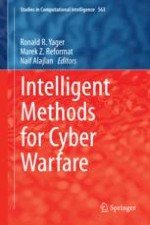
2015 | OriginalPaper | Buchkapitel
Malware and Machine Learning
verfasst von : Charles LeDoux, Arun Lakhotia
Erschienen in: Intelligent Methods for Cyber Warfare
Aktivieren Sie unsere intelligente Suche, um passende Fachinhalte oder Patente zu finden.
Wählen Sie Textabschnitte aus um mit Künstlicher Intelligenz passenden Patente zu finden. powered by
Markieren Sie Textabschnitte, um KI-gestützt weitere passende Inhalte zu finden. powered by